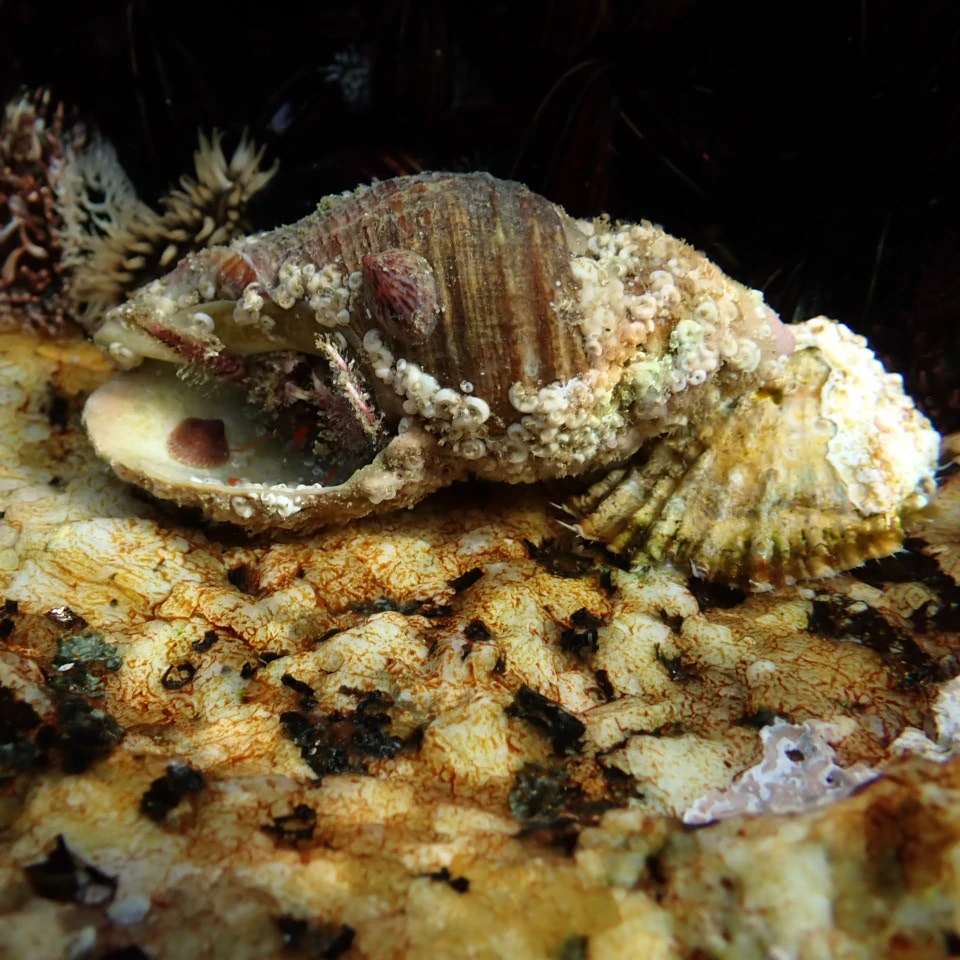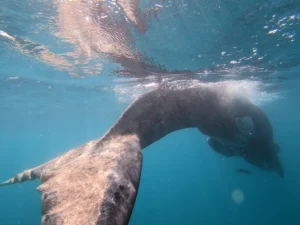Hermit crabs (family Paguridae) are fascinating crustaceans, known for their unique behaviour of repurposing discarded mollusk shells as protective homes. Paguridae date back over 200 million years, where the fossil record shows hermit crabs utilising ammonite shells. Of 800 described species, the majority inhabit marine habitats such as oceans and estuaries, however there are a dozen terrestrial species, and one species of freshwater hermit crab. Species range greatly in size from a few millimetres to roughly a metre in width, such as the terrestrial coconut crab (Birgus latro).
The ocean-going species inhabit a diverse range of coastal and benthic habitats, from tropical reefs to temperate shores. They prefer areas with sandy or muddy bottoms, as well as rocky tidal pools where empty shells are readily available. The terrestrial species inhabit tropical areas and are technically semi-terrestrial, as they require frequent interludes to water in order to reproduce and keep their gills damp.
Unlike other crustaceans, hermit crabs have a soft, vulnerable abdomen, and therefore rely on salvaged mollusk shells for protection. As they grow, they periodically undergo moulting, shedding their exoskeleton to allow for increased size. During the moulting process, hermit crabs are highly vulnerable to predation, and therefore often take shelter and remain inactive until their new exoskeleton hardens. After moulting, they seek out a fresh shell that accommodates their larger size. This process is known as “shell seeking.” The competition for suitable shells can be intense, and hermit crabs may fight over prime real estate. Interestingly, they tend to prefer certain types of shells, such as whelks and periwinkles, while avoiding others. While most hermit crabs inhabit discarded gastropod shells, a select group of species inhabit permanent structures such as sponges, corals and polychaete worm tunnels.

Hermit crabs are omnivorous, consuming both plant and animal matter. Their diet consists of algae, decaying plant material, small invertebrates, and detritus, for which they use their specialised claw-like appendages to bring food to their mouths. Despite their protective homes, hermit crabs are not immune to predation. Many species of fish, especially those that inhabit shallow coastal waters and rocky tidal pools, are predators of hermit crabs. Furthermore, seabirds such as gulls and plovers are also known to feed on hermit crabs found along the shoreline.
Reproduction in hermit crabs takes place sexually, and when it’s time to mate, male hermit crabs engage in courtship behaviours to attract females. Courtship rituals can vary between species but may involve displays of aggression, dancing, or conga-line formations. Fertilisation then takes place internally. Once the eggs are developed, the female releases the larvae into the water. This process is typically timed with favourable environmental conditions, such as high tides or moon phases, to increase the chances of larval survival. The released larvae enter the ocean’s planktonic phase, where they drift with ocean currents, aiding in their dispersal. During this phase, they undergo significant changes and metamorphose into tiny, planktonic hermit crabs. Eventually, they settle onto the ocean floor or other suitable substrates, such as rocks or algae, and begin searching for empty shells.
Hermit crabs play a vital role as ecosystem engineers. By recycling shells and consuming decaying organic matter, these creatures aid nutrient cycling within marine environments. Furthermore, certain species of hermit crabs form symbiotic relationships with other organisms, such as sea anemones or sea cucumbers, gaining protection in exchange for providing the host with mobility and access to food.

As with many marine and coastal species, habitat destruction, pollution, and climate change present significant threats to their populations. Additionally, the global pet trade contributes to the decline of some wild populations, as hermit crabs are often collected for captivity. Therefore, conservation efforts are crucial to protect these unique creatures and the ecosystems they inhabit.
Hermit crabs are captivating creatures with remarkable adaptations and behaviours. Their shell-dwelling lifestyle, feeding habits, and social interactions make them important contributors to marine ecosystems. Understanding the ecology of hermit crabs sheds light on the delicate balance of life in coastal environments and emphasises the need for conservation measures to safeguard these fascinating crustaceans.



